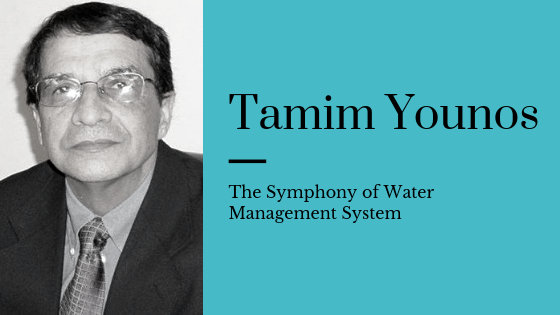By Tamim Younos
Younos is Founder and President, Green Water-Infrastructure Academy, Washington, D.C. and Former Research Professor of Water Resources at Virginia Tech. He lives in Blacksburg.
An orchestra symphony is composed of many pieces using several musical instruments — wind, string, brass and percussion — and aims to perform in harmony. The symphony of water management is composed of several engineered pieces that need to perform in harmony to preserve the health of people and the environment. However, existing water management pieces are designed on separate tracks where each piece performs independently, and very often are in conflict with each other.
A system implies several components. Major components of a water management system are water source, water infrastructure, and water use. Water sources include fresh surface waters (streams, river and lakes), groundwater (wells and springs), rain water, and saline water. Water infrastructures are engineered systems that facilitate various uses of water resources, aim to protect human health and environment, and mitigate natural disasters such as floods and droughts. Water uses include potable water for domestic and commercial sectors, water for manufacturing & industrial sector including energy production, and agricultural use — crop and livestock/poultry production. Of course, the most critical use of natural waters relates to fisheries and recreational activities. Freshwater water resources are limited; its availability is affected not only by natural and geographic distribution but also by water demand. One of the critical challenges we face in the 21st century is increasingly competing demands for various uses of water.
Water use is the key component of water management system. Better planning of water use and use efficiency will lead to less conflict between various uses of water and the optimum design of water infrastructure. Questions to be considered include: 1) how a particular water use could negatively impact the potential for other uses of water; 2) how to prevent the impact of certain uses of water on water quantity/quality of available water sources; and 3) how to achieve the 21st century water quantity and quality goals in a cost-effective fashion. The answer to these questions lies in the concept of water reuse, and the concept of integrating engineered and natural system in the design water infrastructure.
On April 28, 2019, the EPA issued the “Discussion Framework for Development of a Draft Water Reuse Action Plan” and Vision for public review. It states that “Water reuse can be a valuable means to enhance the availability and effective use of our Nation’s water resources and should be considered as part of an integrated water resources management approach to meet the future needs of our Nation. An integrated approach commonly involves a combination of water management strategies (e.g., water supply development, water storage, stormwater management, water use efficiency, and water reuse) and engages multiple stakeholders and needs…………….. For purposes of this discussion framework, “water reuse” includes other common terminology including recycled water, reclaimed water, alternative water supplies, improved water reliability, and water resource recovery.”
Several previous Op-Ed articles discussed topics relevant to the proposed Framework (For example see, “Imperatives for 21st century water management and infrastructure” The Roanoke Times, December 20, 2018” and “Water and our quality of life in the 21st century” The Roanoke Times, August 3, 2017.” Rainwater/stormwater is a major alternative water source and its appropriate use is one of the key solutions. Rainwater/stormwater “wasted water source” can be and should be used at the local level. Potential uses of rainwater/stormwater include but not limited to: 1) indoor & outdoor non-potable uses at schools, hotels & dormitories, churches; 2) urban community gardens; 3) aesthetic uses such as creating ponds; 3) water for livestock and poultry production; 4) and groundwater recharge, particularly in coastal aquifers to prevent salt water intrusion. With appropriate treatment, rainwater can also be used as potable water where needed.
A knowledge-based approach to rainwater/stormwater use will reduce the consumption of river and lake waters thus keep surface waters intact for fisheries and other uses, reduce surface water pollution originating from urban paved areas, preserve groundwater for coping with potential drought, and reduce flooding. Furthermore, decentralized water infrastructure at the local level using a local water source will reduce dependency of water use on energy, an effective mitigation strategy to cope with climate change. Composing the symphony of water management system in harmony with nature at the local level should be our major goal in the 21st century.

